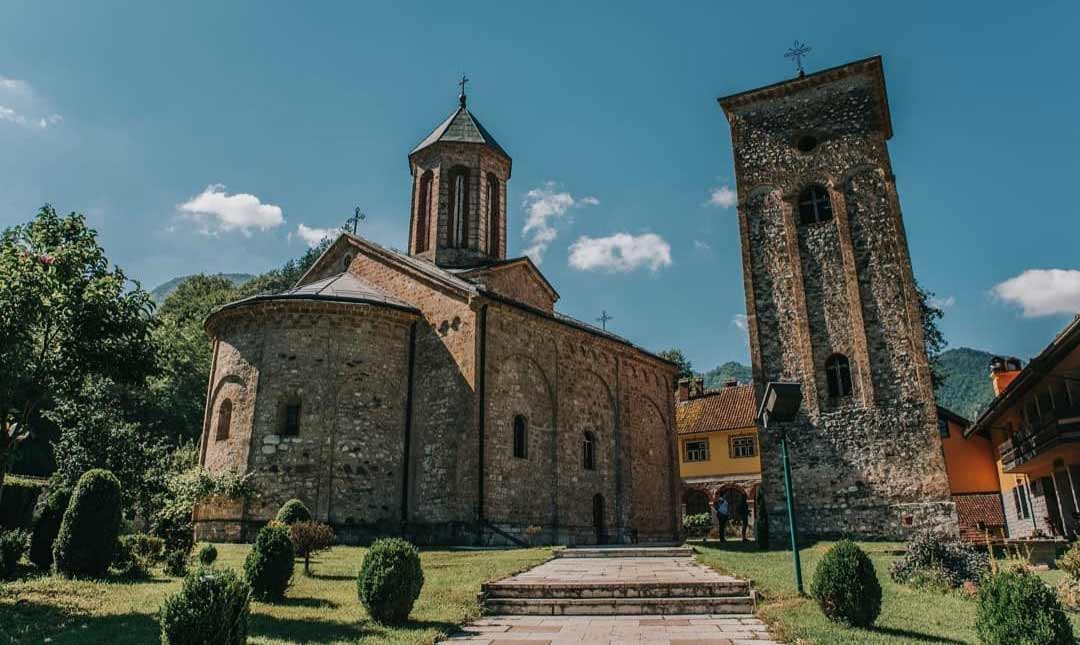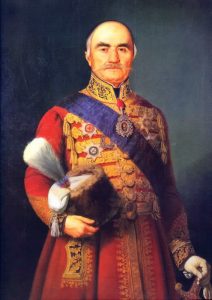Raca Monastery
I was always amazed at how the great construction ventures used to be performed. It is fascinating to know that in the past, it was much easier for people to find motivation and gather around a common goal, a goal that is above each individual, a goal that contributes to the community. How did that go hand in hand with hard-working builders without the tools and technology available today?
Although the accessibility of new technologies makes life significantly easier in many ways, the question is how far has it taken us away from nature and ourselves? Is the rhythm of modern life moving us further and further away, so much so that today we are talking more and more about civilization and life completely separated from nature.
To be able to do otherwise, we learn from the examples of old builders, that were engaged in the construction of monasteries. On the slopes of hills and mountains, tucked between forests and rivers, monasteries are a true testimony to the cohabitation of nature and man. Our destination today is well known. We descend along the Drina, 7km from Bajina Basta. Guess, the topic of today's blog is Raca Monastery again! If you missed our previous trip click here https://clickforserbia.org/monastery-raca/.

Raca Monastery - the period after the death of Abbot Milentija
Abbot Hadži-Milentije, although he dedicated almost his life to the erection and renovation of the Rača monastery, still did not wait for the completion of all works. The Monastery Rača received its iconostasis and frescoes years later, after the death of Abbot Hadži-Milentija.

After the erection of the church and the lodgings within the monastery complex, there was a need to paint the iconostasis and frescoes of the church. Despite the all-round help of Prince Miloš, the iconostasis and frescoes waited until 1840, because the funds for the completion were simply not enough. In 1840, the painter from Šabac, Georgije Bakalović, painted an iconostasis with 450 thalers, which is considered to be one of the most beautiful in Serbia. In 1854, he finished painting the interior of the temple, and the painter from Požarevac, Milija Marković, also worked on the frescoes.
Rača Monastery - The bell tower construction
Just a few steps from the church, on the north side, a large bell tower rises. Tall as a church, it has 3 floors, decorated with one window on each side of the floor, and blind arcades above whose arches are a small rosette. The bell tower, constructed in 1849, was built of hewn and crushed stone and is as high as the church itself. The bell tower itself, just like the Rača monastery itself, had a very turbulent history.
According to some historical sources, the first bells were acquired as early as 1833, but they are losing track and their further fate is unknown. This is not the last put to lose track of the bells. Namely, in 1918, the Austrian occupier removed the bells. Thus, the turbulent life of the monastery continued, which for who knows how many times in its history in a short period experiences new destruction.
Thanks to the hieromonk Abbot Vasilije Domanović, the manager of the Rača Monastery and the deacon Pavle Stojčević, the bells are traced in 1952. The bells are located on the tower of the Catholic church in the Banat village of Mali Karović.
Rača transcription school
During the Turkish rule, the Raca Monastery played a very important role in Serbian literature. Most of the works in the 17th and the first half of the 18th century are connected to the Rača Monastery and the "Rača Transcription School". The monastery of Rača, as the center of the transcription school, had over 300 monks and transcribers, who served 400 shepherds, blacksmiths, and other servants. How important the transcription school was at that time, says that it was provided by 200 guards. All this was noted by the Turkish travel writer Devrvis Zulih in 1630 (better known as Evliya Chelebi).
The transcription school was located near the spring Lađevac, some 40 minutes walk along the river Rača.

Preservation of the Gospel of Mirosavlje
Certainly, the most important and largest document from Serbian literature of the 12th century is Miroslav's Gospel. The interesting thing about this document is that the abbot Platon Milojević managed to save it during the Second World War, hiding it under the steps of the altar. In this way, these invaluable writings were preserved by the Bulgarian punitive expedition, which in 1943 burned all the monastery buildings.
Raca Monastery - Serbian Patriarch Mr. Pavle
The Raca Monastery preserves the story of another great figure in Serbian modern history. On two occasions, the Serbian Patriarch Mr. Pavle visited the monastery, for the first time in the period from 1948-1950, and for the second time in the period between 1951-1955. years. Thanks to the monk Pavle at that time, a part of the holy relics of King Dragutin (who is considered the founder and founder of the monastery) can be seen in the monastery.










